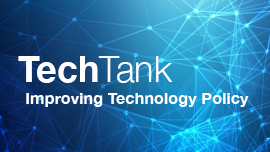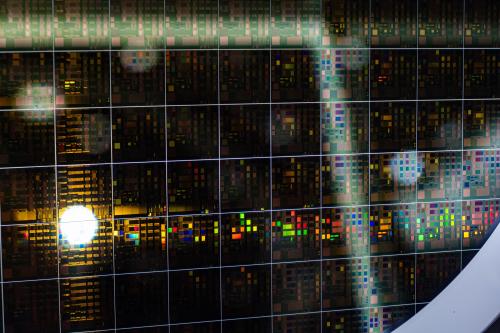The recent release of GPT-3, the state-of-the-art language model developed by OpenAI, has sparked a renewed interest in chatbot technology. One of the most notable developments in this area is ChatGPT, a chatbot that utilizes GPT-3 to perform a wide range of language tasks, such as text generation, language translation, text summarization, and conversation simulation. In its current form, ChatGPT has the potential to revolutionize the way we interact with technology, offering a wide range of applications from computer coding, customer service, and virtual assistants to language translation and content creation.
One of the key advantages of ChatGPT over traditional search engines is its ability to provide contextualized and processed information. ChatGPT can understand the context of a search query and provide results that are relevant and specific to the user’s needs by using natural language processing techniques. It can also interpret the intent behind a user’s query, even if it is phrased in a casual or conversational way, which makes it easier for users to ask questions and get the information they need.
Traditional search engines have been around for a long time and have a vast amount of pre-existing and real-time data indexed, and their sophisticated algorithms typically provide a ranked and vast list of search results that their users should process themselves. ChatGPT processes a vast amount of information and provides its users with information that is tailored to the users’ needs, intentions, and contexts. The understanding of the context of questions represents a valuable advance that is relatively accurate and, in the short time people have been using it, appears to open a new chapter in information search for the future.
However, one current shortcoming of ChatGPT is its limited datasets. ChatGPT is currently trained to the model to the year of 2021 (according to OpenAI), which means that it lacks information on current events or events that requires real-time data. For ChatGPT to function properly, the sources of data should include pre-existing as well as real-time and current data. That would substantially increase the relevance and timeliness of its applications and enhance the user experience.
Why updated training data matters
While it is likely that OpenAI will soon update its database and, in the future, ChatGPT will have processed near real-time data, this points to a future in which data and information describing current affairs, facts, statistics, as well as relevant and insightful perspectives and opinions (found in multiple media of information such as books, articles, blogs, and social media) will be an important segment of the information industry. While artificial intelligence (AI) is making headways in automatically describing pictures in words and processing and summarizing social media information into a coherent description of current affairs, the foreseeable future will continue to require human agents to collect data, information, and opinions and make them available for processing. The value of data, information collectors, and content creators will be an important segment of the new environment.
Additionally, while ChatGPT is great for processing a vast array of pre-existing data and providing a general overview of a topic, it is not strong in producing new insights, knowledge and opinions where human experts already excel. In other words, it can summarize and provide relevant information, insights, and knowledge found in pre-existing data, but is relatively weak in providing new insights, advice, and recommendations on a new phenomenon that lacks pre-existing data and information. This means that to ensure that ChatGPT is providing accurate and up-to-date information, human action may be needed to collect and digitize data.
Currently, we are using a version of ChatGPT that is previously trained in data that OpenAI selected. However, in the future, another potential benefit of ChatGPT could be the ability for individuals to train their own ChatGPTs using their own data. This could lead to a wide range of specialist ChatGPTbots that are tailored to specific fields and industries. This points to a future where people will have their own AI secretaries who understand the nature of their work and what they need.
The pros and cons
Generally, ChatGPT technology has the potential to help institutions achieve greater efficiencies. For example, traditional government chatbots are often frustrating and difficult to navigate, functioning more like a search engine than a helpful tool. The technology can improve government chatbots by making them more personalized and efficient. By utilizing ChatGPT, government chatbots will have the ability to understand government services and the specific needs of citizens, providing a more personalized and efficient experience. For example, a ChatGPT-powered chatbot can inform citizens about any pending services they may have, such as a renewal of their driver’s license, and provide them with the necessary information and steps to address it. This would enable citizens to stay on top of their government-related tasks and help them to be more organized.
On the other hand, the increasing reliance on ChatGPT raises concerns about the potential for civilians to become less entrenched in decision making due to potentially heavy reliance on the use of technology. Just as GPS navigation and smartphones have made it easier for us to forget things like addresses and phone numbers, ChatGPT may also contribute to a decline in our ability to remember specific facts and think critically. While ChatGPT can summarize the key storyline of the top ten most significant works in English literature and provide the relevant quotes and symbolism used in each work, reading such summaries is not comparable to reading the original works. What may happen is a simplification and unification of works into simple summaries and people only consume such succinct versions (and only the versions provided by ChatGPT) instead of reading the original works. This simplification, unification, and “dumbing-down” could have a broader impact on society as it may inadvertently change the way we understand and communicate information and knowledge. In the public sector, the government may see ChatGPT as a tool to simplify complex policies and services into easily digestible and tailored summaries and recommendations, making it easier for citizens to understand and stay informed; however, citizens may become overly reliant on policy information and services suggested by ChatGPT and inadvertently lose sight of other potentially important areas of policy and services, not picked up by ChatGPT.
Relatedly, ChatGPT will create both benefits and challenges in learning environments. On the one hand, it can provide contextualized, processed, and summarized information to students. For educators, it can help grade students’ papers and provide relevant feedback for improvements. For researchers, the technology will help with topical research and literature reviews, as well as help translate languages in the future and edit and improve drafts. But these instances create potential issues of plagiarism, including cases where students write via copying and pasting their papers from ChatGPT without their individualized input. Here, schools at all levels will have to discuss how to factor ChatGPT into policies on educational integrity. Are we going to allow students to use ChatGPT to write their papers and answer exam questions, or are we going to prohibit it or come up with helpful guidelines? All while we maximize the benefits of the ChatGPT in education, while minimizing any negative impacts.
ChatGPT and work
Another potential issue is a job loss or replacement, as ChatGPT performs tasks that were previously done by human workers. ChatGPT may replace jobs that are repetitive, routine, and predictable in nature (administrative jobs) and it may impact jobs that require human intelligence and a high level of education – writing, journalism, translation, education, law, computer coding/engineering, and research. Not only administrative jobs but those of writers, editors, journalists, translators, lawyers, programmers, and professors may be impacted by the new technology in the long run. This means that fewer people may be needed to produce the same amount of information, which could have significant implications for the job market.
On the computing side, ChatGPT is capable of writing code in various computer languages such as Python, C++, and JavaScript and it can review and identify errors within written codes. This raises a question regarding the future of programmers and developers. This is unlikely to replace human agents in the affected fields completely, but considering the sophistication of the chat system, it is likely to reduce the number of human agents needed for the same task. Instead of hiring ten programmers, now you may need two programmers who can review, correct, and edit code created by ChatGPT or other similar AI systems. ChatGPT is not perfect, it makes mistakes and at times provides incorrect answers. Also, as mentioned previously, it comes short in providing insightful perspectives on current affairs due to timely data.
Conclusion
ChatGPT is a powerful tool that has the potential to revolutionize the way we do work, communicate, process information and live. Its ability to provide contextualized and processed information, understand the intent behind a user’s query, and provide results tailored to the user’s needs is an important breakthrough in information search. As OpenAI and other similar companies continue to develop and update its database and improve ChatGPT, it is important to consider the implications of this technology on society, including the potential for job replacement, the importance of data and information collection, and the potential for dumbing down the population. Overall, ChatGPT is a powerful tool that holds great promise, but it is also important to consider needed guardrails.
The Brookings Institution is committed to quality, independence, and impact.
We are supported by a diverse array of funders. In line with our values and policies, each Brookings publication represents the sole views of its author(s).








Commentary
Building guardrails for ChatGPT
February 7, 2023